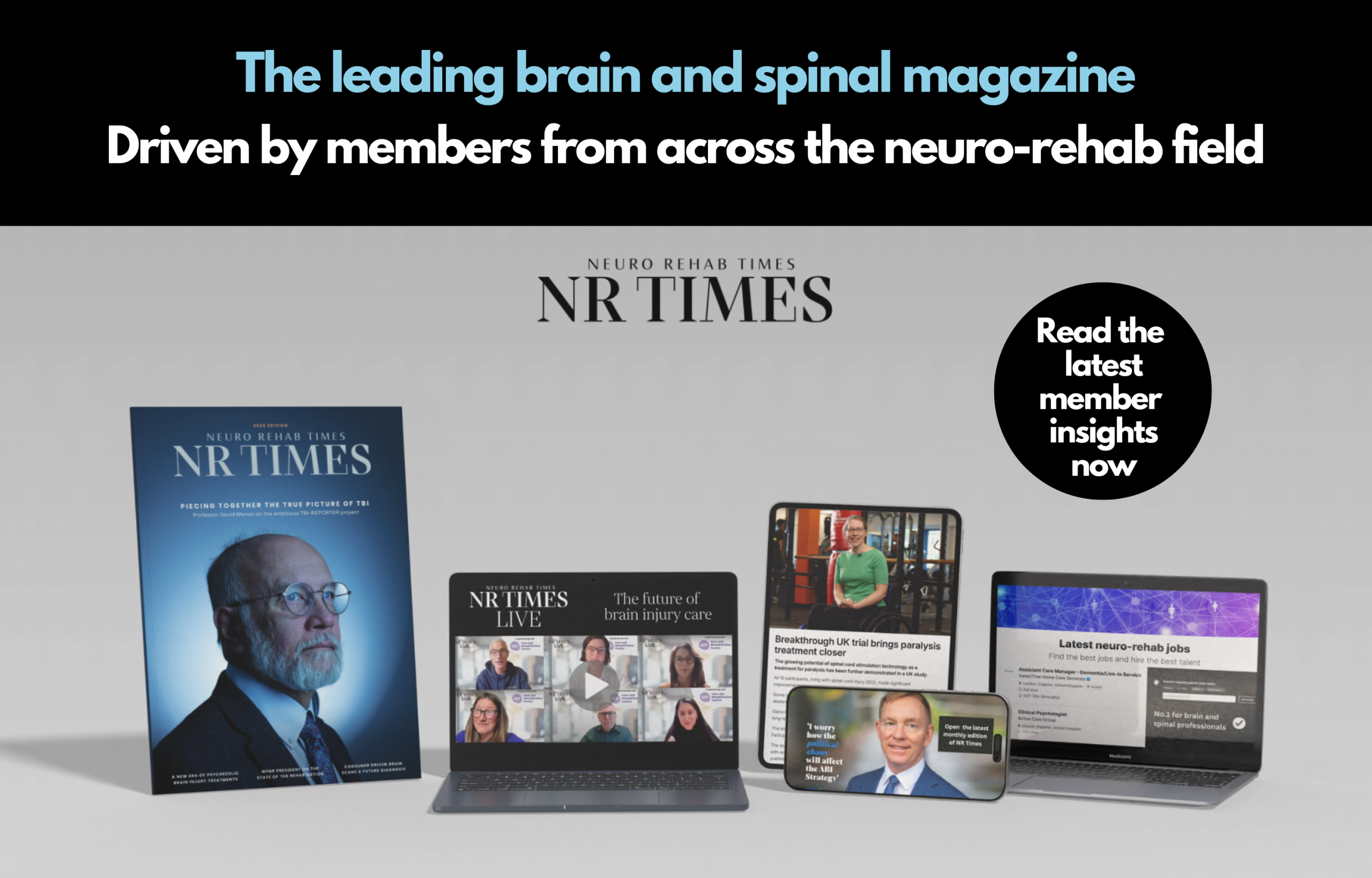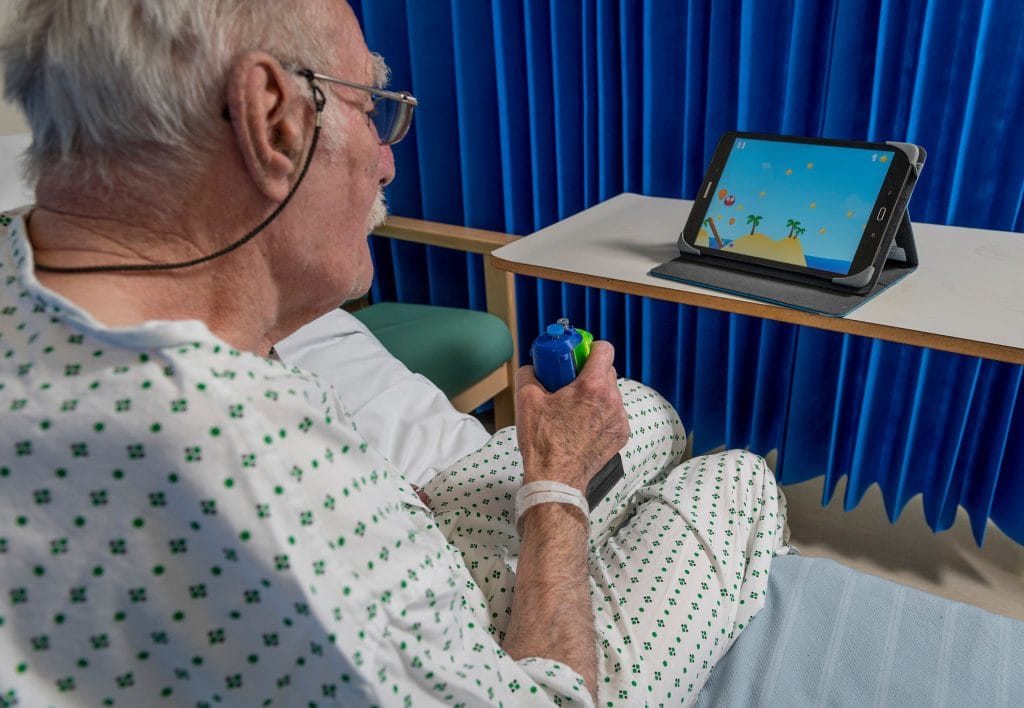Interview: Transforming stroke rehabilitation with VR technology

Neurotechnology company Reneural is transforming stroke rehabilitation with a new digital health initiative that utilises virtual reality (VR) technology. NR Times editor Stephanie Price speaks to co-founder Heraldas Gaspariunas (above left), COO, and Victor Harabari, CEO (above right), to find out more.
Technology has seen rapid advancements over the last few decades that are now beginning to translate into innovative healthcare applications. VR – which creates virtual, interactive worlds – is one of those technologies, and it is already being utilised in areas such as mental health, physical therapy and remote care.
In early 2025, neurotech company Reneural was selected for funding through NHS England’s New Hospital Programme, which aims to deliver 40 new hospitals by 2030. The funding will see the launch of a new initiative that will develop a VR-based stroke rehabilitation platform, designed to improve upper-limb recovery as well as to extend healthcare access by delivering the therapy remotely, in patients’ homes.
Reneural is developing the platform – which will include key features such as a clinician dashboard for remote monitoring and personalised therapy planning – in collaboration with The Hillingdon Hospitals NHS Foundation Trust and Brunel University of London.
Digital innovation for stroke care
Reneural’s VR-based platform aims to improve patient engagement whilst also enhancing recovery outcomes, utilising gamification and exciting environments to encourage use. While the platform is specifically designed for upper-limb rehabilitation, Reneural is planning to create an ecosystem of devices that work together, including EMG and FES loops for muscle stimulation, and assistive robotics like exercise bikes for lower limb rehab.
Harabari explains that Reneural initially focused on building the system for hospital settings, creating an engaging and easy-to-use platform for clinicians to integrate VR into rehabilitation pathways, particularly in acute care.
“Seeing the need to extend this to home settings, we designed an ecosystem that includes a tablet for inpatient use,” says Harabari. “This allows clinicians to see exactly what patients see, create tailored programmes, and even run group sessions.”
Research shows that patients recovering at home can achieve equal or better outcomes compared to recovering in a hospital. Reneural has also developed a web platform for home use which has been integrated into the therapy so that patients can continue exercises prescribed by clinicians remotely, reducing the need for hospital visits.
“Patients remain in constant contact with their therapist, who can monitor exercises, track time spent in VR, and adjust programmes as needed,” says Gaspariunas.
“This helps increase both repetition, which is the strongest predictor of recovery, and patient engagement.
“Traditional stroke rehab often involves paper exercises or videos that aren’t tailored.
“Our immersive technology provides guided, adjustable therapy remotely, giving patients more control while keeping clinicians in the loop.
“This helps align therapy with recommended guidelines, which is three hours, five days a week during the crucial six-month ‘golden window’ after a stroke.”
Harabari adds: “Our overall goal is to ensure patients receive the best care, when they need it most.
“Our future plans also include support for Parkinson’s and other rehabilitation needs.
“For now, we’re focusing on delivering a strong, commercially viable product that works in both hospital and home settings, while building partnerships to expand our offerings.”
VR environments and gamification
Reneural’s first version of the software used realistic VR environments that aimed to help improve daily living, such as a virtual kitchen where patients can make a cup of tea with realistic cups and kettles. The platform has now been developed to incorporate gamification to help encourage patients to use the platform.
“Gamification is key. We integrate game development techniques to make therapy engaging,” says Harabari.
“Patients often feel like they’re in a relaxing or surreal environment, like sitting on a beach solving a puzzle – which makes them more likely to return.
“This allows patients to perform what are often boring, repetitive tasks in a more exciting environment.
“Beyond that, it enables automated data tracking, so we can monitor patient progress over time.”
The platform takes standard practices that are conducted in stroke rehabilitation units and uses immersive technology to translate those elements into virtual reality. Using VR can help patients overcome mental barriers, Harabari explains:
“For example, people with frozen shoulders may struggle to move in real life, but VR environments can unlock those movements by reducing fear and providing a safe space to push limits.
“Looking forward, our second version will incorporate mixed reality, taking therapy beyond what’s currently possible.”
Development and collaboration
The platform has been developed over two years by the Reneural team and its advisors, with an early iteration involving patient engagement and testing with collaborators at Brunel University and Hillingdon Hospital.
“We received incredibly positive feedback,” says Harabari.
“We’ve continued collaborating since our initial iteration, including a recent publication on a new prototype using closed-loop EMG and FES.
“These partnerships with academia and public institutions like the NHS have been crucial for building something truly unique.”
Usability testing of the platform has been carried out with Brunel University, Hillingdon Hospital, and South and Mid Essex University Hospitals to ensure the system is friendly for elderly patients.
“Currently, we’re running a study with the University of Hertfordshire, testing the system with stroke survivors at home, and we have had our first patient using the headset at home,” says Gaspariunas.
“Early feedback on this has been very positive.”
Harabari and Gaspariunas explain that the Hillingdon Hospital partnership leverages clinical expertise, input from patient groups, and the stroke rehabilitation community.
“Our goal is to create a clear use case for how this technology can be used in UK hospitals,” says Gaspariunas.
“We’re also exploring the carbon footprint benefits of moving therapy home and ways to reduce staff burnout – a critical issue given the current NHS therapist shortage.
“If successful, we hope to roll this out across the country.
“NHS adoption can be challenging due to procurement systems, but we see strong interest across UK trusts.
“Our partnership with the New Hospital Programme demonstrates NHS commitment to investing in innovative rehab technologies.”











